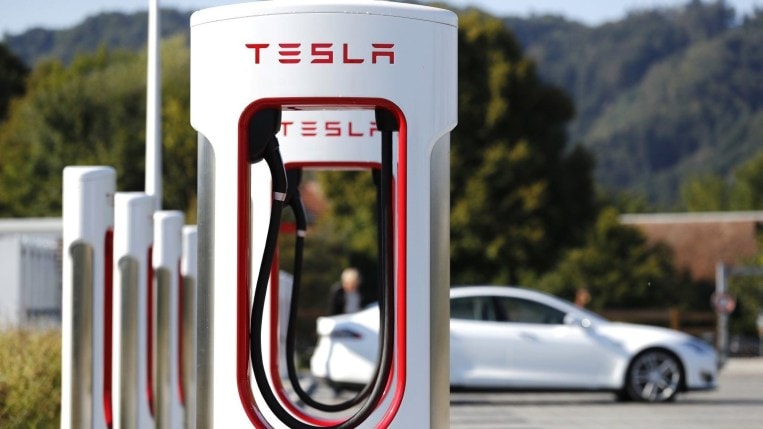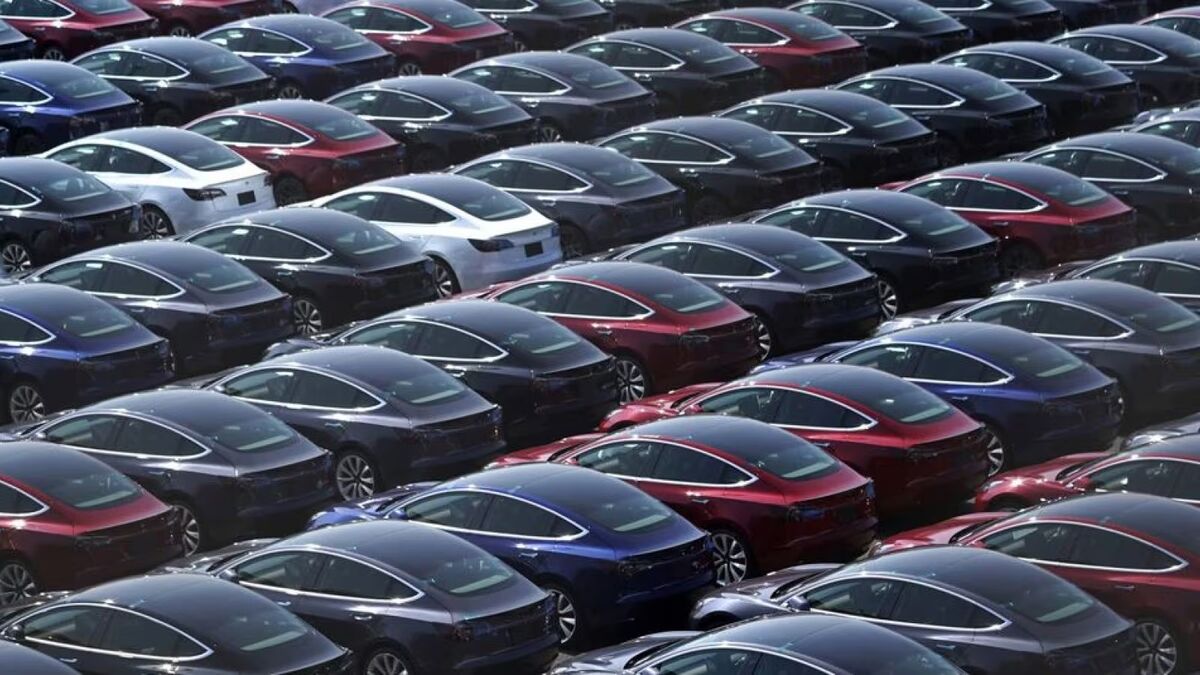
Users can find the sites through Tesla’s app. The company says it is “starting with a select number of sites so that we can review the experience, monitor congestion and assess feedback before expanding.”
Select Superchargers in the US are now open to other EVs → https://t.co/zObpFM4li1 pic.twitter.com/wQW0KGvlpw
— Tesla Charging (@TeslaCharging) February 28, 2023
Tesla’s (Once) Walled Garden Is a Huge Advantage
Not every electric car can use every electric car charger. Different manufacturers use different plug shapes.
Tesla uses its own proprietary plug. The company calls its plug the North American Charging Standard (NACS), but at the moment, no other car company uses it. Tesla made its plug design available to other companies late last year, but to date, no other EV maker has begun using it.
Most manufacturers selling cars in the U.S. use a common charger called the Combined Charging System (CCS). Some advocates note CCS plugs are larger and heavier than NACS plugs, making them difficult to operate with one hand. Tesla’s NACS system may be more accessible thanks to its lighter weight and smaller size. But, to date, only Tesla uses it.
Tesla operates its own network of charging stations it calls Superchargers. The Supercharger network is the most extensive charging network in America, with chargers in all 50 states, along most interstate highway routes, and in nearly every city of significant size.
Until now, it has been available only to Tesla owners.
That gave the company a huge competitive advantage. Even shoppers who prefer an EV from another company might find that owning a Tesla gave them access to more chargers in more locations.
Several companies operate rival charging networks using the CCS plug, available to owners of other brands’ EVs. But none rival the Supercharger network in size and reach.
The Federal Government Wanted Tesla To Open Its Network
Studies show America needs to build thousands more EV chargers to make driving on electricity as simple as driving on gasoline power.
To spur such growth, the federal government has made billions of dollars available to states to fund new charging stations. But, to qualify for that money, companies are required to offer the CCS plug on their chargers.
In a blog post, Tesla says, “It’s always been our ambition to open the Supercharger network to non-Tesla EVs, and by doing so, encourage more drivers to go electric.”
Tesla’s move allows the company to qualify for federal funding.
Two Prices, Membership Structure Available
Non-Tesla owners can pay per charge or access lower rates by signing up for a monthly $12.99 membership, “which guarantees people a lower charging rate (about 25% cheaper per session),” says InsideEVs. Rival charging networks, like those operated by Electrify America, use a similar pricing structure.
Non-Tesla owners will pay more than Tesla owners to use Superchargers. The company says the higher price “reflects additional costs incurred to support charging a broad range of vehicles and adjustments to our sites to accommodate these vehicles. Rates vary by site, and you can view charging prices in the Tesla app.”
The company has released a video explaining to non-Tesla owners how to use Superchargers.
Some Tesla Owners Concerned About Traffic, Geometry
Early response on social media has included some Tesla owners objecting to the idea of an influx of non-Tesla drivers at Supercharger sites.
When a non-Tesla EV is charging can it have an annoying green light to alert other nearby people? This approached worked really well converting people to iPhones. @elonmusk
— Jared Isaacman (@rookisaacman) February 28, 2023
Others have noted that Superchargers are designed to work easily with the charging port locations on Tesla vehicles. Some other companies’ EVs may not fit easily into Supercharger parking spots.
What happens when a non-Tesla has to pull up to a spot that takes up two charging stalls becuase their port is on the wrong side? pic.twitter.com/UEEnkbjpPS
— The Prince (@SVMovingOn) March 1, 2023
Tesla notes that drivers of its cars will still pay lower prices to use the chargers. They will “benefit from the seamless integration of charge post and vehicle, optimized route planning and battery pre-conditioning,” the company says. The company promises owners that “Future sites will only be opened to non-Tesla vehicles if there is available capacity.”







